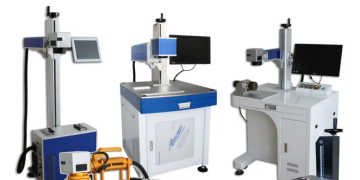Laser hair removal is a popular and effective method for reducing unwanted hair, providing a longer-lasting solution compared to traditional methods. After a laser hair removal session, it’s natural to anticipate the shedding of treated hair. While the process of hair shedding occurs naturally, there are some tips and practices that may help expedite this phase. In this article, we will explore various strategies to speed up hair shedding after laser hair removal.
Understanding the Laser Hair Removal Process
Before diving into ways to accelerate hair shedding, it’s essential to understand the mechanism behind laser hair removal. During the procedure, the laser emits concentrated light that is absorbed by the pigment (melanin) in hair follicles. This light energy transforms into heat, damaging the follicles and inhibiting future hair growth.
The hair shedding phase typically occurs within 1 to 3 weeks after the treatment. Treated hairs may appear to grow but are, in fact, in the process of being pushed out of the follicle. The shedding of these hairs reveals smoother skin, and it’s a sign that the laser treatment has been effective. Discover the benefits of at home laser hair removal devices, providing professional-quality results from the comfort of your own space.
Strategies to Speed Up Hair Shedding
Exfoliate the Skin
Gently exfoliating the treated area can help encourage the shedding of dead and treated hair. Use a mild exfoliating scrub or a soft brush to remove any loosened hairs.
Regularly Moisturize
Keeping the skin well-hydrated with a non-comedogenic moisturizer can facilitate the shedding process. Moisturized skin is less likely to trap dead hairs, allowing them to surface more easily.
Warm Compress
Applying a warm compress to the treated area can help open up the hair follicles, potentially expediting the shedding process. Ensure the compress is not too hot to avoid irritation. Embrace the power of technology with home laser hair removal for long-lasting, professional results in the comfort of your home.
Gentle Massage
Massaging the treated area with gentle circular motions can encourage the loosening of treated hairs. Be cautious not to apply excessive pressure to avoid irritation.
Avoid Sun Exposure
Direct exposure to sunlight or tanning beds can increase skin sensitivity, potentially delaying the shedding process. Use sunscreen and protective clothing to shield the treated area from UV rays.
Stay Hydrated
Adequate hydration promotes overall skin health. Drinking plenty of water can contribute to maintaining skin elasticity, which may aid in the natural shedding of treated hair.
Physical Activity
Engaging in light physical activity, such as walking or yoga, can improve blood circulation. Enhanced blood flow may support the skin’s natural renewal process, including the shedding of treated hair.
Avoid Hair Removal Methods
Refrain from using other hair removal methods, such as waxing or plucking, during the shedding phase. Let the treated hairs shed naturally to avoid potential irritation.
Patience is Key
Hair shedding after laser hair removal is a natural process that varies among individuals. Patience is crucial, as forcing or rushing the shedding phase may lead to skin irritation.
Follow Post-Treatment Instructions
Adhering to the post-treatment care instructions provided by your laser hair removal practitioner is essential. These guidelines are tailored to promote optimal results and minimize the risk of complications.
Conclusion
While the shedding of treated hair after laser hair removal is a natural and self-regulated process, incorporating these tips into your post-treatment care routine may help support and expedite the shedding phase. It’s important to approach the process with patience and follow the recommendations provided by your laser hair removal practitioner to ensure a safe and effective outcome. If you have concerns or questions about the shedding process, consult with your practitioner for personalized guidance.




















































